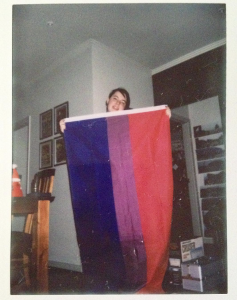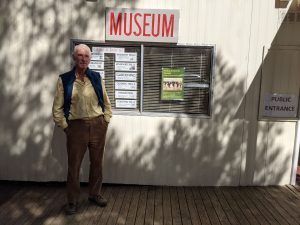The Bright Side of Life – A Day in a Nursing Home
A jail. Where you go to die. Food worse than hospitals. These are all ideas that have been associated with nursing homes in recent years. The reality, however, couldn’t be further from these stereotypes. Yass Valley Aged Care (YVAC) is a 65-bed facility for high- and low-care residents. I spent a day there in order to find out what life is really like in a nursing home.
I have arranged to visit the facility in time to join residents and volunteers on a bus trip to a local primary school. The school is holding its annual Easter Bonnet Parade and has invited local nursing homes to attend. Arriving at YVAC at 9am, I notice that two buses labelled ‘Yass and District Aged Care Service’ are parked at the doors, ready to take out the residents. I meet Janice who is the activities officer for the facility. Before I got here, the residents have showered and had their choice of a cooked or continental breakfast, prepared in the on-site kitchen. There is a sign asking all guests to sanitise their hands before entering. I meet Janice in her offic, where I notice a huge basket filled with colourful Easter eggs.
“Those are to hand out to the children at the school,” she informs me. “If we ever get there,” referring to the fact that the bus is supposed to be leaving in 15 minutes.
While Janice works on a bit of paperwork before departure, I head out to the lounge which is a large room filled with mis-matched armchairs, a television, books, and the Balcony Café. The Café opens on Wednesday mornings and the residents can enjoy an espresso coffee with a scone and slice of cake. I notice two ladies sitting in the corner of the room having a lively chat. As I make my way over to them, they look up at me and smile. They introduce themselves as Mary and Ronnie, and we strike up conversation straight away.
“Are you coming with us on the bus today?” Mary asks. She is pleased when I explain that I will be with them all day.
“I can’t make it today,” Ronnie says, explaining that she has to have stitches taken out instead.
We are soon joined by two other residents, Marion and Jean. When I explain to Marion that I am writing a story on the day she begins to tell me about her life.
“I was born in Brighton Sounds, but I’ve moved all over the place. I lived in Nambucca Heads before going to teachers’ college,” she begins. “I’m excited to go to the school today because I used to be a teacher, you see. I taught all over the place – even in London. Of course, I had to have a second job in a café for when it was school holidays. Both jobs taught me patience.” Marion’s story is cut short when an announcement is made that we need to make our way to the bus.
On today’s trip the two buses will be taking 16 residents, four volunteers, and two staff members. Both buses are specially equipped with lifts that can take wheelchair-bound residents up and onto the bus. The process of loading residents onto the bus takes around 20 minutes, and once that is done we are on our way. Janice hands out rabbit ears for the residents to wear. Before we know it, the 15 minute bus ride is over and everyone needs to get off again.
We are met at the school by a teacher and two students, and make our way to the main courtyard to wait for the show to begin. I find myself sitting between Mary and Velvy, who reminisce on their days at the school while we wait.
“I used to go here as a child. I’m 80 now but not too much has changed,” Mary tells me with a cheeky grin.
Velvy also spent some time at the school, but as a teacher.
“I taught needlework here in ’76,” she says. “A little while before you were born,” she adds.
The courtyard begins to fill with the students’ parents and families, all here to watch the parade. Some students come out and announce that they are holding an Easter raffle, with all funds raised going to the Year Six end-of-year trip.
“It’s 50 cents a ticket,” a young girl announces.
Suddenly everyone is reaching for their purse, and I find myself wishing that I carried cash on me because the prize is a basket filled with chocolate! As the residents fill out the raffle book, another bus pulls into the carpark, this one from a different local nursing home. Linton Village has also been invited to come and watch the parade. As the staff from Linton begin to unload their residents, volunteers and staff from YVAC head over and help with the process.
Once everyone is seated, a school staff member welcomes everyone and an assembly begins. Although the school only has 36 students, the talent equals that of a larger school. We are introduced to Harriet* who performs a song for the audience. While she is singing there is silence, and I know I’m not the only one with goose bumps. The nursing home residents make a number of comments when Harriet finishes, commending her talent and bravery for standing up there in front of such a large audience.
Following Harriet’s performance, the winner of the Easter raffle is announced. There is much excitement as one of YVAC’s very own residents, Pat, is announced as the winner. She later tells me that her grandkids are going to be very spoilt this Easter.
The morning’s activities continue with a poem from the youngest students of the school, the ‘Easter Bonnet’ parade, and finally, with the students serving hot cross buns and coffee to all the residents.
Our time at the school is over and the buses are loaded up again, but the day is far from over. We will be heading to a country café across the road from the school for lunch.
Although the café is only a short walk away, mobility is an issue for a lot of residents and they need to take the bus. We are led to an outdoor area where everyone is seated. In front of us is a view over the café gardens and paddocks which is home to a Shetland pony, an alpaca, a Clydesdale, a goat, and an emu. I am told there used to be two emus, but one was lost to an unfortunate highway accident. The residents and staff of YVAC are regulars at the café, and the staff have the order-taking process down pat.
Milkshakes, coffees, and hot chocolates are delivered to the tables, and I sit across from Marion who is keen to finish telling me about her life, as is her friend Blanche.
Blanche explains that she used to work in the local telephone exchange. “I never listened in, but a lot of the girls did,” she says. “If you were ever caught listening in, you were sacked on the spot.”
While Marion and Blanche exchange stories about where they travelled in their younger days, the food is served. Most people have ordered fish and chips but there are also a lot of gourmet sandwiches and salads coming out. Everyone is very complimentary about the food here and it’s why they keep returning. Janice explains to me that getting the residents out each week is very important because a change of scenery is good for anyone.
Everyone finishes eating at different times, and those who are finished move up to the fence where the farm animals are located. There is a lot of debate going on about whether the goat is pregnant.
“I don’t even think it’s a girl,” Nora says.
“Look at its large belly, though,” counters Catarina.
In order to settle the argument, I am sent inside to ask the café staff whether the goat really is pregnant.
“No, she’s just fat!” one of the girls tells me. I head back outside to let the residents know but the argument has passed and they are talking about something else.
Once all the meals are finished, everyone makes their way back out to the car park where there is an attraction that wasn’t there when we came in: a vintage car is parked next to the bus. Everyone gathers around and admires it, and Jean comments that she would love to have a ride in it.
“I couldn’t drive, but I’ll go passenger and you can take me!” she says.
After all the excitement wears off, the buses are loaded and we are ready to hit the road. Before we do so, the owner of the café comes out with her camera to take a picture of the group.
“See you next time!” she says, and away we go.
The day is not over, however, and Janice announces that the best part of the day is still to come: we will be stopping at McDonald’s on the way home for an ice-cream cone. Bill the bus driver pulls up out the front of McDonald’s and I get out to help Janice while the residents wait in the bus. As it is Easter Thursday, and the McDonald’s is on the highway, we are met with huge crowds once we get inside. We are reconsidering our choice coming here, but before we know it a worker grabs our arms and ushers us to the front of the line.
“Can’t keep the oldies waiting!” she says.
We place the order — 15 choc-waffle cones — and a team of staff start putting it together. We are in and out in less than five minutes. I get back on the bus and start handing out the cones to those that said they would have one, and I’m lucky enough to be able to enjoy one myself on the way back to the facility. The trip goes quickly as everyone discusses their plans for the Easter weekend.
Back at the facility, the bus is unloaded, goodbyes are said to the volunteers, and everyone goes back to their usual afternoon activities. I take the time to catch up with Ronnie, and along with Mary and Alma we tell her about the day we have had. Ronnie says she wishes she could have come.
It’s just shy of 2:30pm and even though I’m exhausted, it seems like I’m the only one. The residents start to gather in the lounge ready for the next event of the day – afternoon tea. This usually consists of a cup of tea or coffee, and a pastry or muffin that is baked fresh daily in the facilities’ kitchen. After I leave, they will go and relax in their rooms until 5pm when dinner is served in the dining room. It seems to me like a jam-packed day, but the residents love it.
Mary sums the lifestyle up nicely: “They look after us here – there’s always something to do so you’re never lonely.”
* Students’ names have been changed
Story by Elly Mackay.





Be the first to comment!